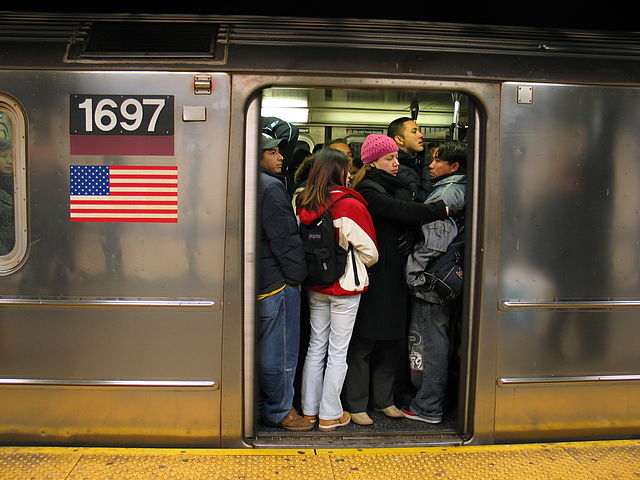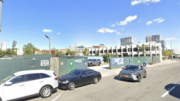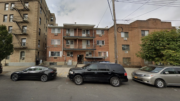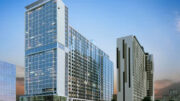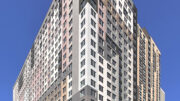Eastern Queens, long seen as one of the sleepiest parts of New York City, is booming. A wave of immigration from Asia – East Asians in the northeastern corner, South Asians (many by way of the Caribbean) in the southern corner – has reinvigorated what was once a middle class redoubt in a declining city.
The region’s growing Chinese population – New York City alone has almost 800,000 – has outgrown Chinatown in Manhattan and turned downtown Flushing into their primary business district, bidding up prices for a built environment that hasn’t grown much since the ‘60s, and straining transit networks that haven’t advanced since the 7 train was completed in 1928.
South Asians, meanwhile, are bursting at the seams in neighborhoods to the south. They’re on the rise from East New York to Nassau County, but with crowding most acute in neighborhoods like Richmond Hill and South Ozone Park, to the west of Jamaica.
The neighborhoods of eastern Queens desperately need a housing stock that can keep up with the immigrant growth, and fortunately, the newcomers seem open to it. Longtime anti-growth white residents still hold an inordinate amount of power, but their numbers are falling, and the ascendant groups have much more pro-development attitudes.
Flushing has received a number of rezonings in the past few decades and will be the subject of another proposal by the de Blasio administration. And to the south, the Chhaya Community Development Corporation, a nonprofit that advocates for the needs of New Yorkers of South Asian descent, has spoken out against the Bloomberg-era downzonings that swept through southern Queens.
But with growth must eventually come transit. And on that count, the city is woefully underprepared. For travel into Manhattan, the Flushing and Queens Boulevard subway lines are at capacity, and the Long Island Rail Road has no interest in providing rapid transit service.
The governor and mayor, unfortunately, don’t seem to have much of a sense of urgency. Andrew Cuomo has control over the MTA and therefore the most power, but the only transit he’s proposing in eastern Queens is a gimmicky AirTrain to LaGuardia, a bread-and-circuses strategy aimed at the elite that will be all but useless as transportation.
The de Blasio administration has its own transit gimmick – ferries – but is at least doing a bit more with the buses. Woodhaven and Cross-Bay boulevards will be the administration’s signature bus project, with talk of physically separated lanes for buses on the massive thoroughfare.
But Woodhaven has eight or 10 lanes, and carving out two for transit is not a politically difficult move. Bus rapid transit there will be a good start, especially with the massive 50,000-strong weekday ridership of the four buses that ply the route, but there’s still more to be done for buses in the northeastern corner of the borough.
Of Queens’s busiest bus routes, nearly all travel through Flushing, connecting it with other Chinese neighborhoods – Elmurst and Maspeth for the Q58, Auburndale and Oakland Gardens for the Q27, and an increasingly Asian Jamaica and the neighborhoods in between for the Q44, Q65, Q25, and Q17.
This is where the most intense need for better surface transit is, but improvements appear much slower going. Between Flushing and Jamaica, planning is underway to improve the Q44 – the borough’s second busiest route, along Main Street – but opposition to transit priority is strong among the white politicians representing majority non-white neighborhoods. The Q25 on Kissena is next up for the area, but community consultation has yet to begin. The other routes out of Flushing – to the west on the Q58, which is the borough’s busiest single route, or to the east on the Q27, the third-busiest – do not have any improvements planned for the near future.
If New York City were a European city, many of these routes would merit full-blown light rail. In New York, just giving them proper bus lanes will be a struggle. Rolling out proof-of-payment ticketing on all lines, as is standard in European cities, would speed boarding by ending the infuriatingly slow and infantilizing practice of the bus coming to a complete halt while everyone lines up single-file to dip their MetroCard. But this does not appear to be under consideration beyond the new Select Bus Service routes.
The regional rail situation is even more depressing. Eastern Queens has a strong network of Long Island Rail Road lines connecting Flushing, Jamaica, and neighborhoods beyond to Manhattan, but with high fares, no integration with the subway, and low frequencies outside of peak hours, the are all but useless to residents, many of whom make the trip into Manhattan or Flushing on cheaper but slower buses and subways.
The fundamental barrier to rapid transit-like service is the labor-heavy operational style of the Long Island Rail Road. With multiple conductors on each train checking tickets, unchanged from the early 20th century, the MTA simply doesn’t have enough money to run trains frequently and at low cost.
As a result, when the 7 train was shut down the other day because of an errant umbrella on the tracks, Flushing-bound riders on the LIRR from Midtown only saw two trains per hour in the afternoon, despite the fact that the tracks are capable of carrying up to seven in each direction, more like a proper subway line, as they do during the busiest hours of the day. Trains could also be reconfigured to allow more room for standees, boosting the total number of passengers they could carry. And potential capacities will be boosted even further once East Side Access opens, providing another pair of tracks from Long Island and Queens into the railroad’s new terminal below Grand Central.
If the MTA were interested in revamping their labor agreements, they could retrain conductors as train drivers, and move ticketing off the train, where it can be done more efficiently. The LIRR (and, for that matter, Metro-North and New Jersey Transit) could transition to either a turnstile-based fare payment system, as is used on the subway and in London, Paris, and Tokyo, or move to a proof-of-payment-based system, as used in German-speaking cities and Toronto.
Ultimately, it might be a while until eastern Queens’s sclerotic white political establishment is replaced with a more pro-growth one that reflects the demands of the growing immigrant population. But when the change does occur, there are no shortage of transit reforms that could ease the strain on what has the potential to be one of the most dynamic and exciting corners of the city.
Talk about this topic on the YIMBY Forums
For any questions, comments, or feedback, email [email protected]
Subscribe to YIMBY’s daily e-mail
Follow YIMBYgram for real-time photo updates
Like YIMBY on Facebook
Follow YIMBY’s Twitter for the latest in YIMBYnews

